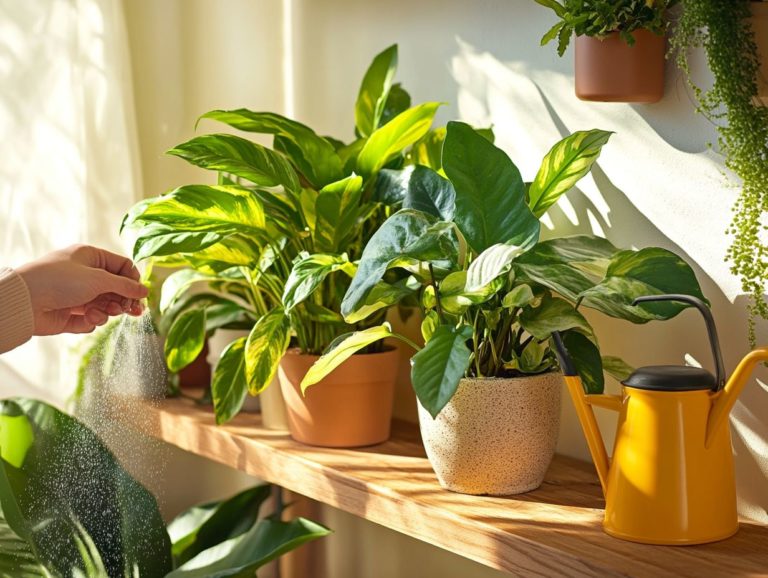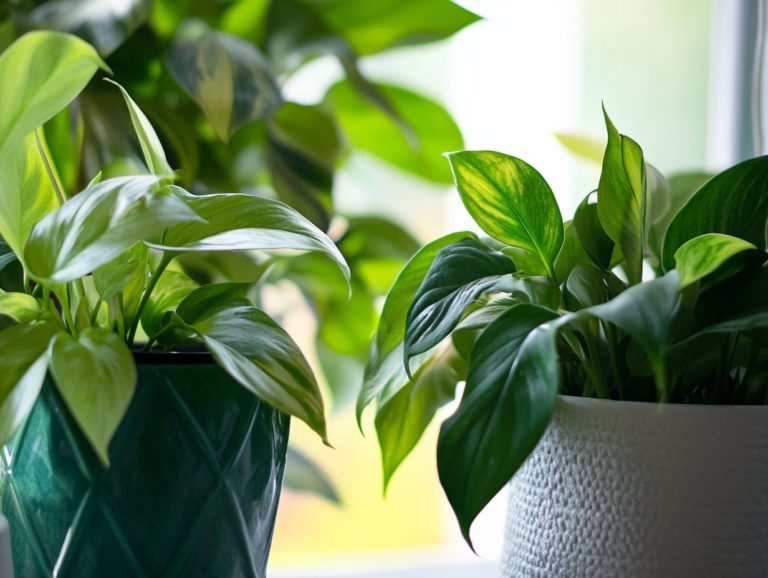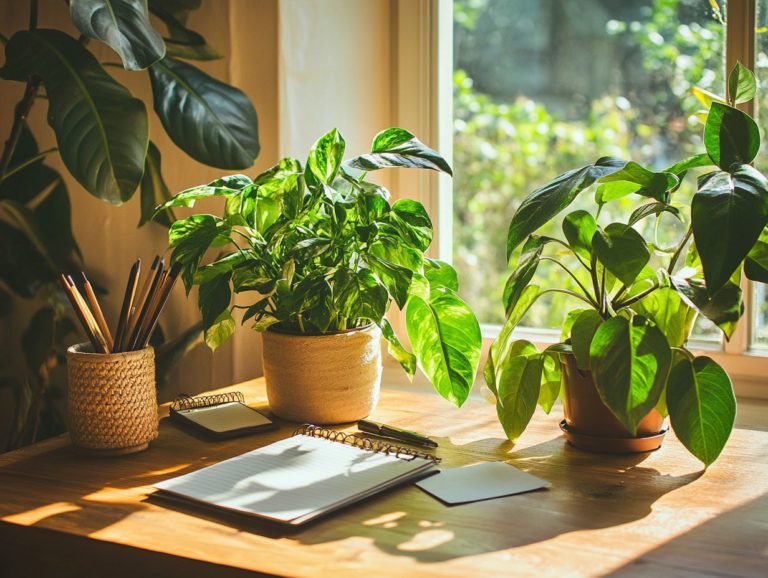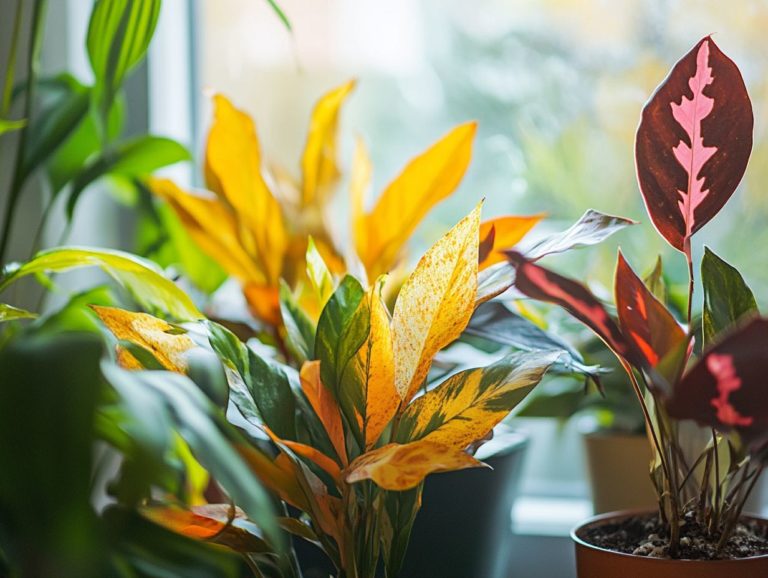Recognizing Symptoms of Plant Dehydration
Plants play a vital role in our environment, yet they are susceptible to dehydration if not given the proper care they deserve.
Grasping the causes and effects of dehydration is essential for maintaining vibrant, healthy greenery. This article delves into the signs of dehydration, highlighting the visual cues and behavioral changes you should be vigilant about.
It also offers effective watering techniques and additional maintenance tips to help revive any struggling plants in your care. You’ll find preventive measures discussed to ensure your plants flourish, even in the face of environmental challenges.
Discover the secrets to keeping your plants healthy and hydrated!
Contents
Key Takeaways:
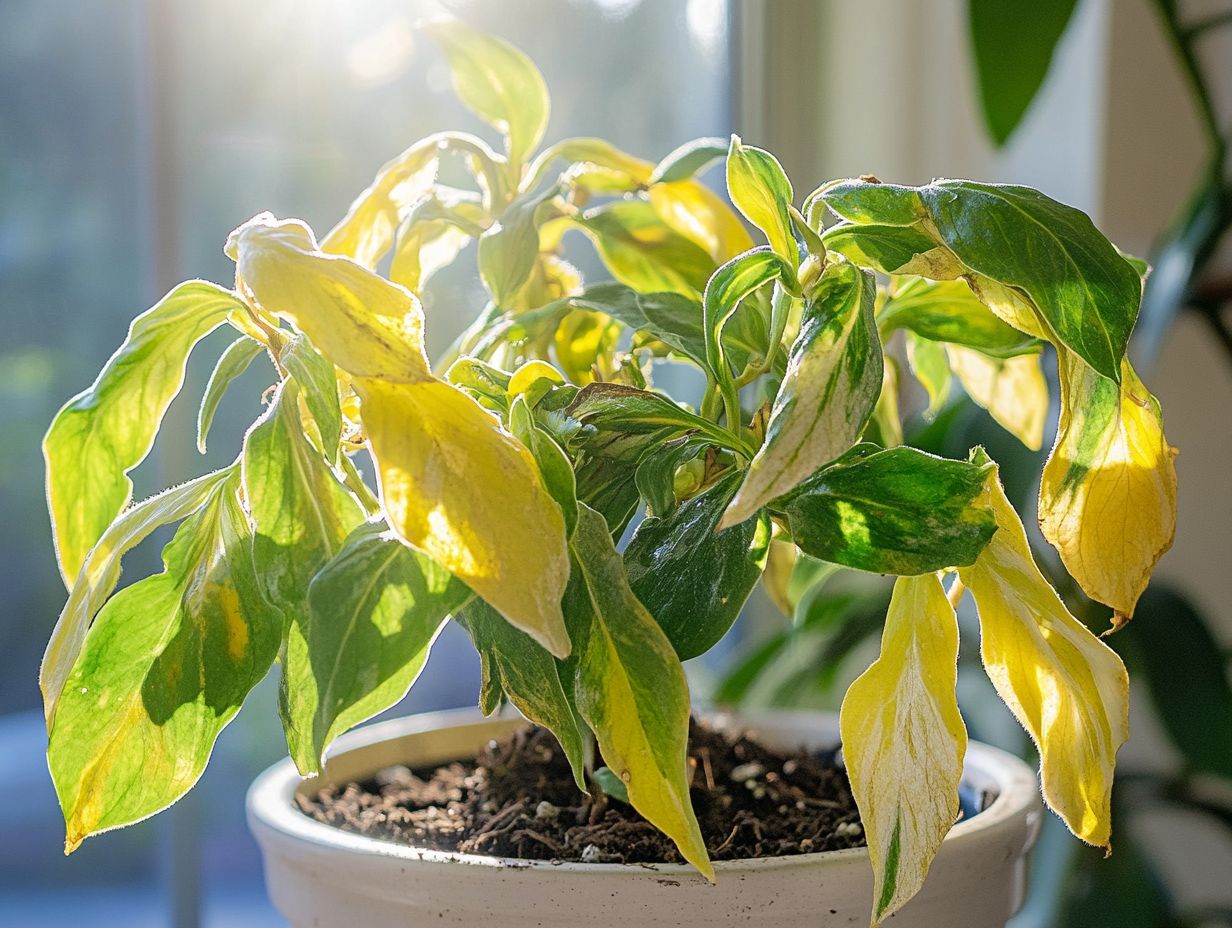
- Proper watering techniques and regular maintenance are essential for preventing plant dehydration.
- Visual cues and changes in behavior of plants, such as drooping leaves and wilting, are signs of dehydration.
- Environmental factors, such as temperature and humidity, also play a role in plant dehydration and should be considered in plant care and maintenance.
Understanding Plant Dehydration
Understanding plant dehydration is essential for any gardener committed to cultivating vibrant, healthy landscapes. Dehydration occurs when your plants aren’t receiving enough water, resulting in telltale signs like wilting leaves and parched soil.
By recognizing the symptoms of under-watering and uncovering the root causes, you can avert long-term damage to your greenery. This issue doesn t merely affect individual plants; it can also disrupt the surrounding soil, nutrients, and the overall vitality of your garden.
Whether you re nurturing succulents, newly planted trees, or a variety of other plants, mastering the ability to identify and address dehydration is crucial for your gardening success.
Causes and Effects on Plant Health
The causes of underwatering in your plants can vary significantly, yet they often result in harmful effects on their health, such as slow growth and wilting.
Environmental factors like high temperatures, low humidity, and prolonged exposure to direct sunlight can intensify the issue, leading to increased evaporation and rapid soil drying. Poor watering practices, like infrequent watering or using unsuitable soil mixtures, can also inhibit your plants’ ability to absorb necessary moisture.
Over time, these stressors can severely affect your plants’ vitality, causing stunted growth and impeding the development of strong root systems.
Roots help plants absorb nutrients. Without enough water, plants struggle to get what they need, resulting in deficiencies that further compromise their health and resilience.
Signs of Dehydration in Plants
Identifying the signs of dehydration in your plants is essential for timely intervention and maintaining their health. Early detection can prevent more serious issues later on.
Look out for common visual cues like curling leaves, yellowing foliage, or even visible footprints in the soil, all of which signal that your plants are under significant stress. You might also notice stunted growth or wilting clear indicators that your plant is calling out for water.
Understanding these symptoms is vital for effective plant care, giving you the power to apply the right gardening tips and restore your plants to their former glory.
Visual Cues and Changes in Behavior
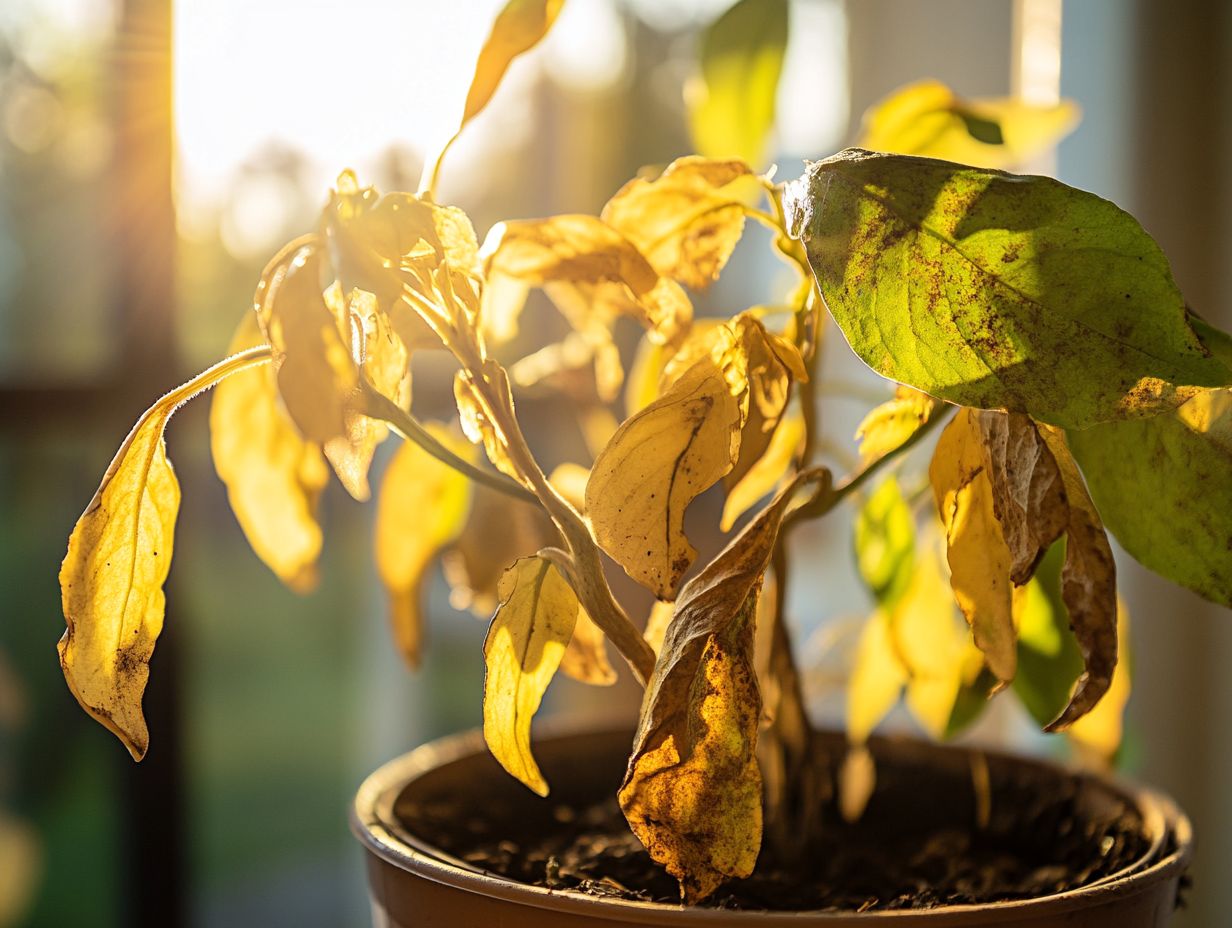
Visual cues are invaluable when it comes to identifying plant dehydration. You ll notice that wilting leaves and curling edges are primary indicators of distress that demand your attention.
Different species respond to water scarcity in unique ways. For example, succulents might puff up slightly before showing signs of wilting, while ferns tend to droop quickly and develop brown tips. These physical changes are a clear reflection of the plant’s fight to conserve moisture, signaling an urgent need for your intervention.
However, it’s not just about what you see. Accurate monitoring of soil moisture levels is essential, as any delays in response can lead to irreversible damage. Utilizing moisture meters can help you achieve precise assessments, allowing you to act swiftly and ensure the health and vitality of your green companions.
Take action today! Your plants will thank you.
How to Address Plant Dehydration
Addressing plant dehydration requires careful attention to your watering techniques. Healthy soil and robust roots are essential for optimal plant health.
Utilizing effective watering methods, such as deep watering which means watering deeply to encourage roots to grow deep into the soil and moisture meters, allows you to accurately assess the needs of your plants. This prevents the pitfalls of both under watering and overwatering.
Tailoring your gardening strategies to the unique requirements of specific plant types, including succulents and trees, can significantly bolster their resilience against lack of water.
By mastering the art of proper hydration, you create an environment that nurtures growth and vitality in your garden.
Effective Watering Techniques
Employing effective watering techniques is essential for combating plant dehydration and ensuring sustained health in your garden. There are several methods at your disposal.
Among these, drip irrigation systems stand out for their precision, delivering water directly to the roots of your plants. This approach conserves moisture and minimizes evaporation talk about efficiency!
If you prefer a more laid-back option, soaker hoses are perfect for providing a gentle, even release of water along their length. They are ideal for garden beds or rows of annuals.
For those who enjoy a hands-on experience, hand watering allows you to monitor water distribution closely and tailor the process to meet the specific needs of your plants.
No matter which method you choose, keep in mind that water pressure plays a crucial role. Insufficient pressure can impede effective irrigation. Understanding the unique water requirements of different plants will further enhance your results, ensuring that leafy greens receive the moisture they crave while drought-resistant varieties thrive on less frequent watering.
Additional Care and Maintenance
In addition to mastering proper watering techniques, you should recognize that additional care and maintenance are essential for promoting plant health and preventing dehydration-related issues.
Building and maintaining nutrient-rich soil is foundational for achieving thriving plants. Healthy soil serves as a reservoir of essential nutrients, fostering robust growth and resilience against pest infestations and diseases.
By integrating organic matter, such as compost, you can significantly enhance both soil structure and fertility. Implementing effective pest management strategies like companion planting and the use of organic pesticides will protect your plants from harmful organisms while encouraging biodiversity.
Regular monitoring and adopting appropriate disease prevention methods, including crop rotation and sanitation practices, will help safeguard your plants’ vigor. This holistic approach ensures that your garden not only survives but flourishes, creating a vibrant ecosystem.
Preventing Dehydration in Plants
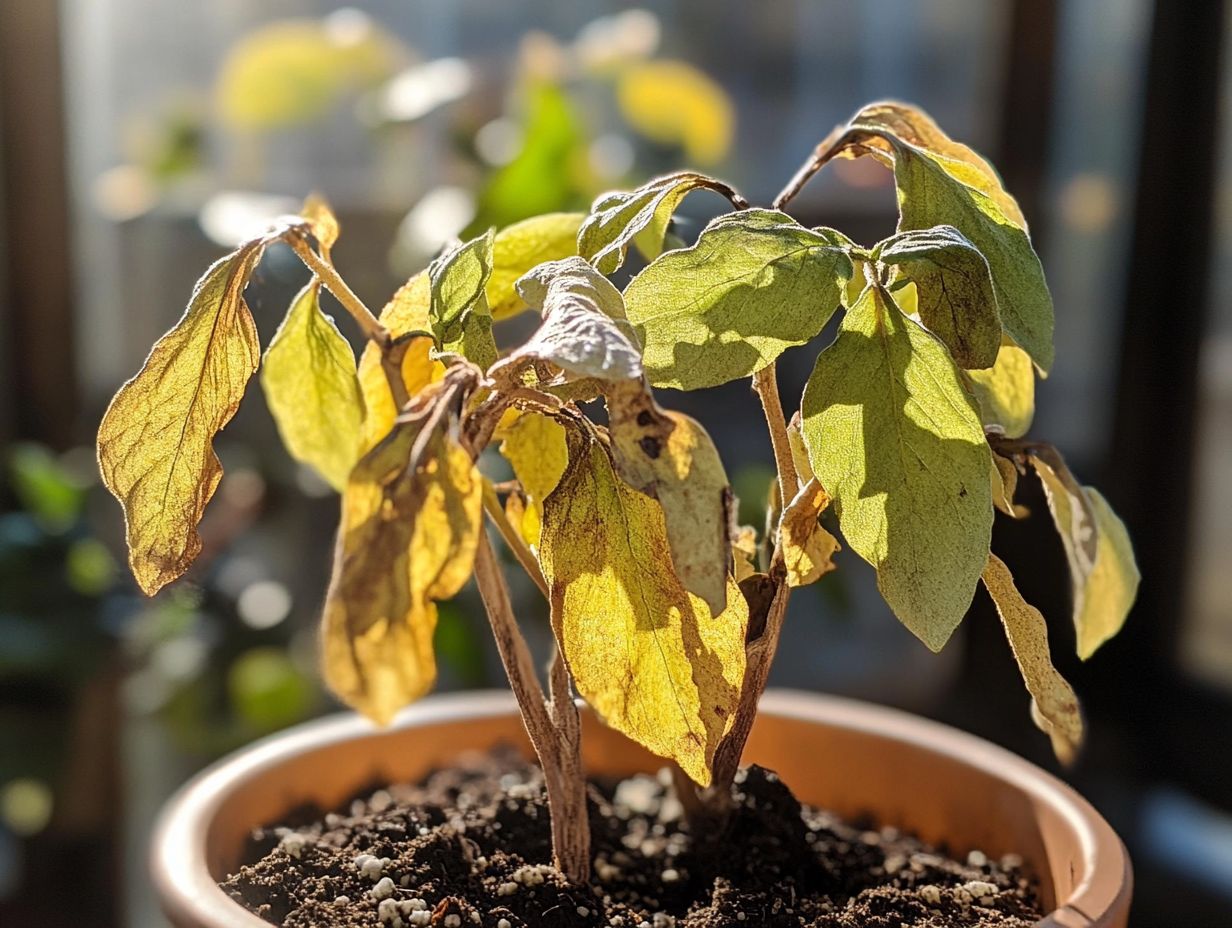
Act quickly to prevent dehydration in your plants! This strategy combines attentive care with a keen understanding of environmental elements.
By employing effective gardening techniques and being vigilant for signs of lack of water, you can ensure your plants flourish even under challenging conditions.
Implementing strategies like mulching, fine-tuning your watering schedule, and choosing drought-resistant varieties will greatly bolster your garden s resilience. Grasping the relationship between environmental factors and your plants needs is crucial to protecting them from dehydration.
Start using these techniques today, and watch your garden thrive!
Proper Plant Care and Maintenance
Proper plant care is vital for preventing dehydration and nourishing soil rich in essential nutrients. Routine soil tests help you understand pH levels and nutrient availability.
This early action enhances plant health and ensures efficient use of resources. Adjust your care routines to fit the specific needs of different plants, as some may need more moisture than others.
Using mulching techniques helps retain soil moisture, reducing dehydration risk during hot months. A great watering schedule will foster robust roots and vibrant leaves, taking your gardening to new heights!
Environmental Factors to Consider
Environmental factors greatly influence your plants’ hydration needs, especially during drought periods. Temperature changes can affect how quickly your soil dries out.
Keep an eye on both heat levels and soil moisture. Higher humidity can reduce evaporation, so regularly check your soil s moisture content.
The type of soil also matters: sandy soils drain faster than clay. Adjust your watering routine based on these factors and look for signs of thirst in your plants.
Incorporating mulch in your gardening can help retain moisture during hot spells. You should also increase your watering frequency in dry conditions to keep your plants thriving!
Frequently Asked Questions
What are some common signs of plant dehydration?
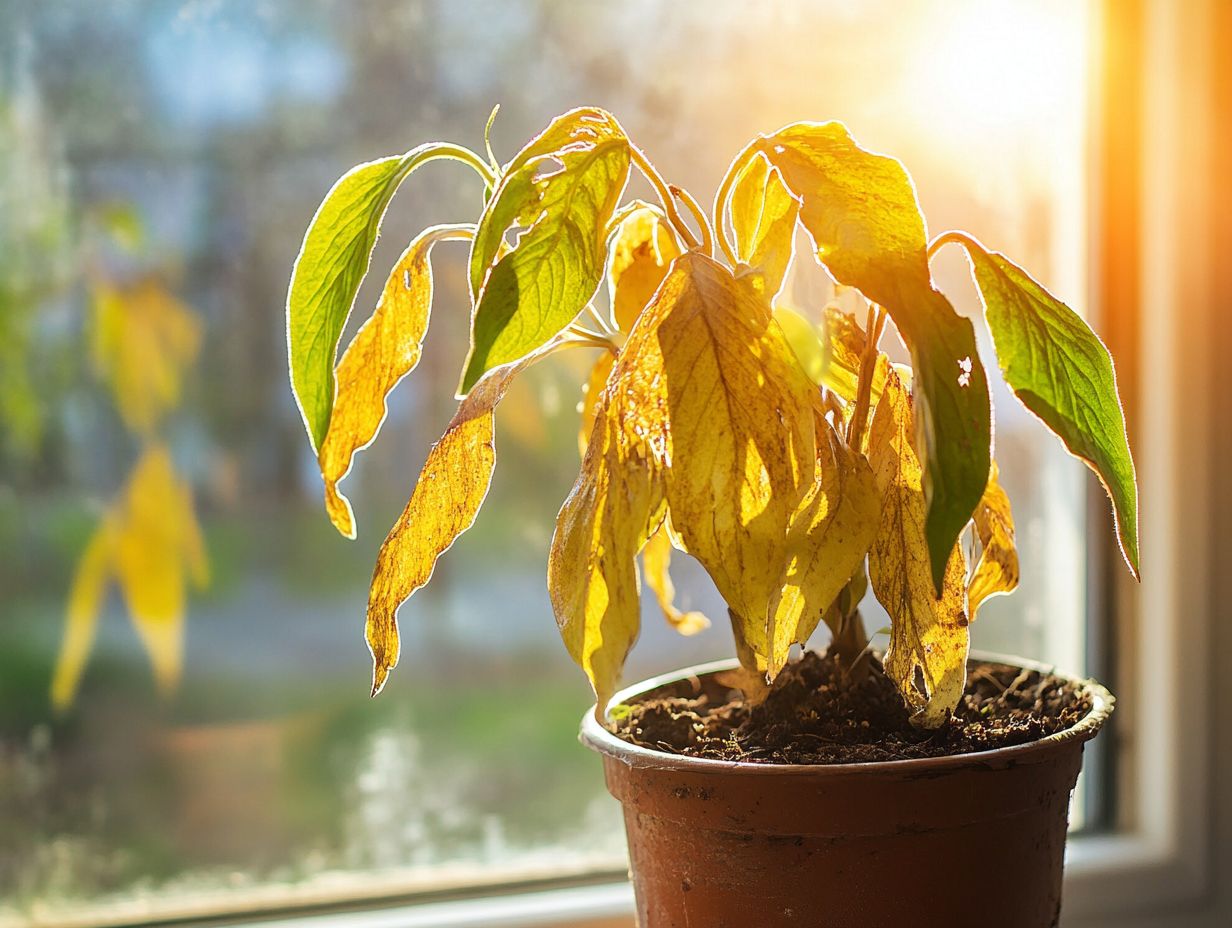
Common signs include wilting leaves, dry or brittle stems, and yellow or brown discoloration. You may also notice leaves turning brown or curling, indicating too little water.
How can I tell if my plant needs to be watered?
To see if your plant needs water, gently stick your finger about an inch into the soil. If it feels dry, it s time to give your plant some water.
This check is even more crucial for plants in drought conditions or those with stunted growth due to lack of water.
Can overwatering also cause symptoms of dehydration in plants?
Yes, overwatering can cause symptoms like wilting and yellowing leaves. This happens because it leads to root rot, preventing roots from absorbing water and nutrients.
It’s essential to find a balance. Both overwatering and underwatering can harm your plants.
Are certain plants more prone to dehydration than others?
Yes, some plants are more vulnerable to dehydration. Plants with thin leaves, such as ferns and succulents, are particularly affected.
Many trees also show signs of a lack of water if not monitored carefully.
Can I revive a dehydrated plant?
Act quickly! A dehydrated plant can often be revived if caught early. Gently water it and place it in a shaded area to recover.
If the plant is severely dehydrated, it might not survive. Always check for visible footprints in the soil to gauge moisture levels.
How can I prevent my plants from becoming dehydrated?
Water your plants regularly. Adjust the schedule based on temperature and humidity.
Consider using a moisture meter, a device that measures soil moisture levels. This will help maintain healthy soil and prevent common diseases.


